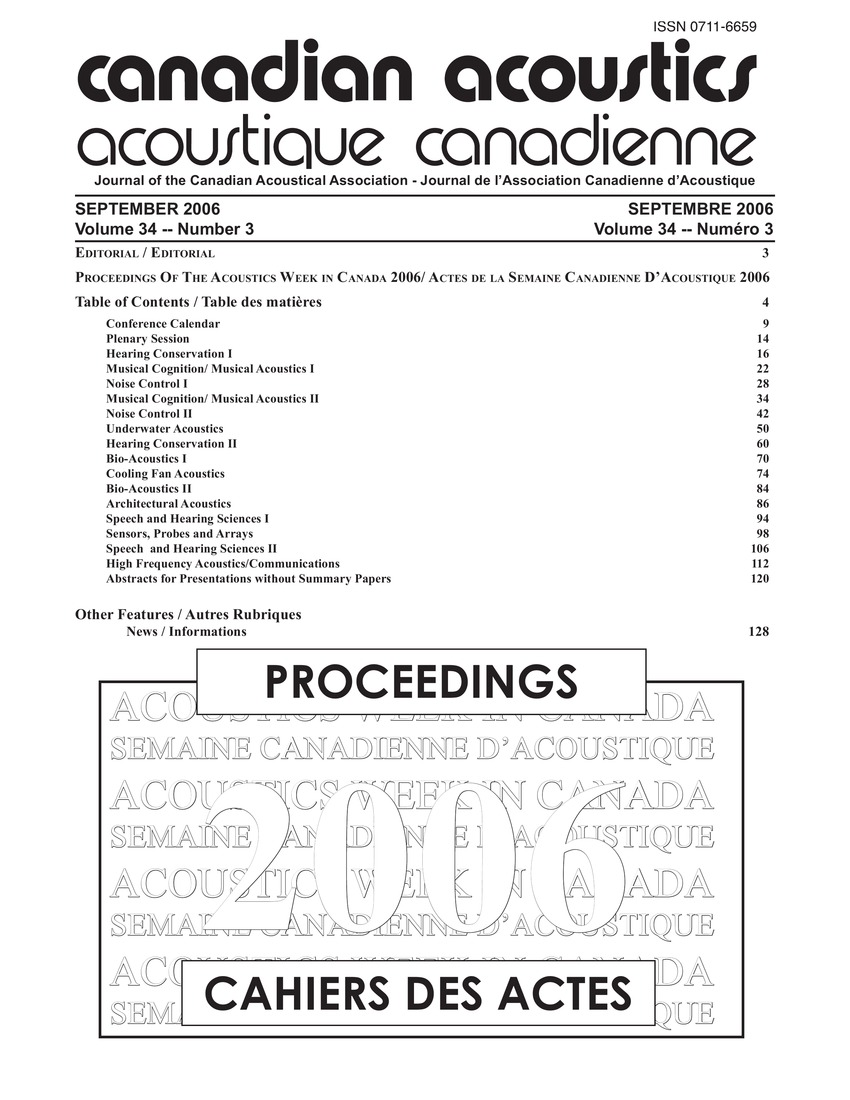Developing a guide for Flanking sound transmission in wood framed construction
Keywords:
Energy transfer, Speech synthesis, Wooden construction, Flanking, Floor assemblies, Wood-framed constructionAbstract
A subset for airborne sources and horizontal transmission, applied to wood-framed constructions, with the wall and floor assemblies, is presented. The estimates of the apparent sound isolation are obtained by summing the energy transmitted directly through the separating wall or floor assembly with the flanking paths involving wall. Most of the sound is transmitted via the floors and other paths such as ceiling or the abutting side walls. The gypsum board ceiling is generally mounted on resilient channels, which reduces flanking transmission through the path significant to them. Flanking through an abutting side wall transmits less sound, which could also limit overall performance provided the separating wall and the floor are improved. This experimental characterization of the direct and flanking sound transmission paths in wood-framed construction can lead to a manageable set of path transmission terms.Additional Files
Published
How to Cite
Issue
Section
License
Author Licensing Addendum
This Licensing Addendum ("Addendum") is entered into between the undersigned Author(s) and Canadian Acoustics journal published by the Canadian Acoustical Association (hereinafter referred to as the "Publisher"). The Author(s) and the Publisher agree as follows:
-
Retained Rights: The Author(s) retain(s) the following rights:
- The right to reproduce, distribute, and publicly display the Work on the Author's personal website or the website of the Author's institution.
- The right to use the Work in the Author's teaching activities and presentations.
- The right to include the Work in a compilation for the Author's personal use, not for sale.
-
Grant of License: The Author(s) grant(s) to the Publisher a worldwide exclusive license to publish, reproduce, distribute, and display the Work in Canadian Acoustics and any other formats and media deemed appropriate by the Publisher.
-
Attribution: The Publisher agrees to include proper attribution to the Author(s) in all publications and reproductions of the Work.
-
No Conflict: This Addendum is intended to be in harmony with, and not in conflict with, the terms and conditions of the original agreement entered into between the Author(s) and the Publisher.
-
Copyright Clause: Copyright on articles is held by the Author(s). The corresponding Author has the right to grant on behalf of all Authors and does grant on behalf of all Authors, a worldwide exclusive license to the Publisher and its licensees in perpetuity, in all forms, formats, and media (whether known now or created in the future), including but not limited to the rights to publish, reproduce, distribute, display, store, translate, create adaptations, reprints, include within collections, and create summaries, extracts, and/or abstracts of the Contribution.


